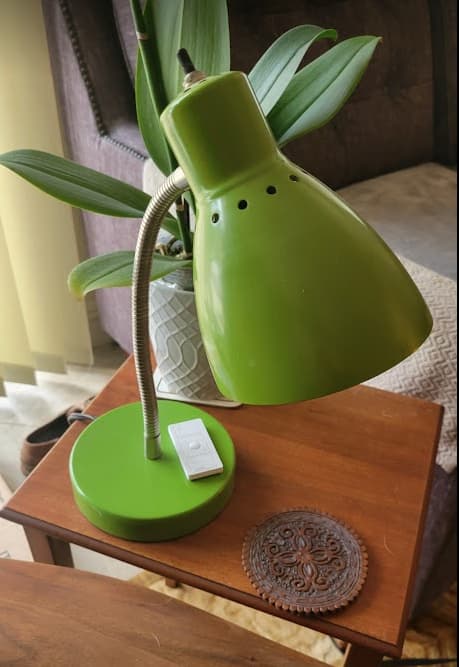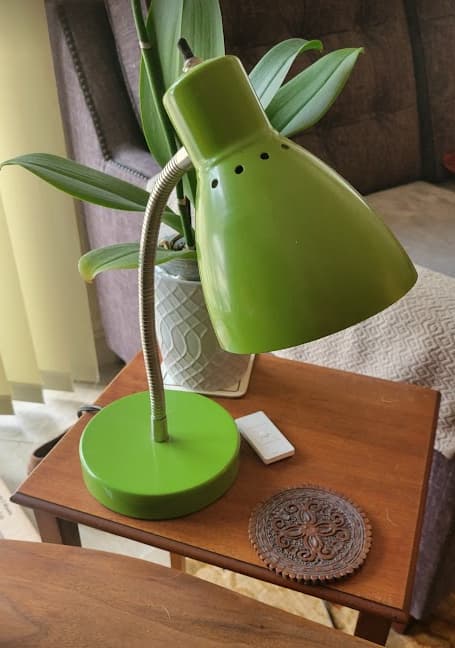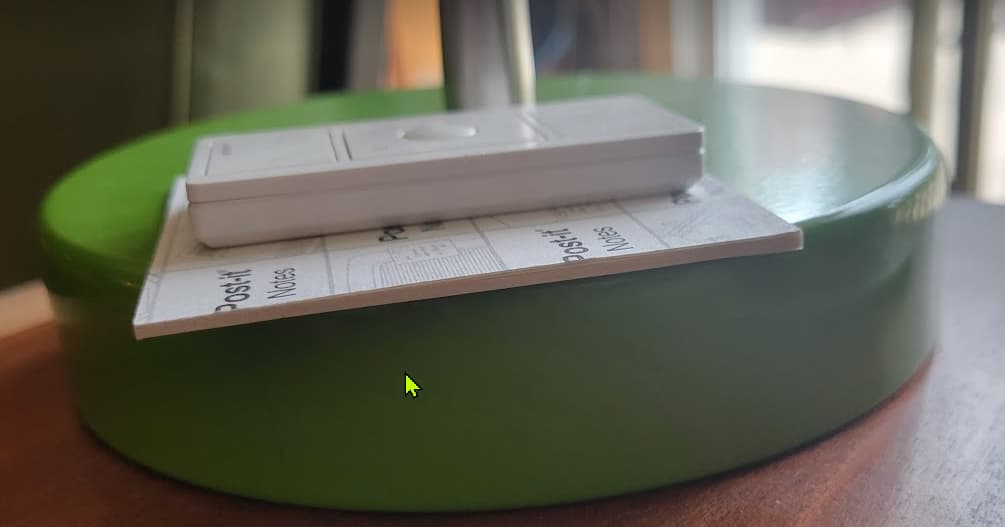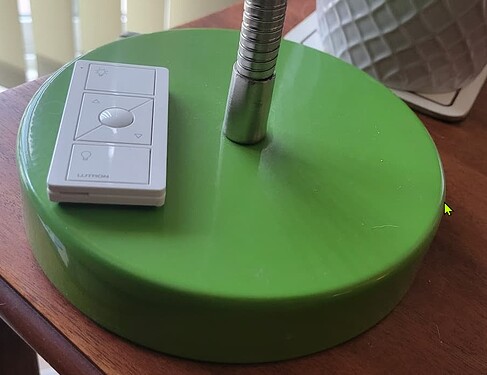Thought I'd share as this was an interesting (at least to me) troubleshooting experience, and I need someone to tell me the why. ![]()
We have a small old-school desk lamp in the family room. Sort of a green version of the cute lamp "Luxo Jr." that Pixar uses as their mascot. AFAIK it's pretty old - my wife's family had it for many years. I didn't have spare smart plug around when I set the lamp up, so I put a Hue bulb in it and we have controlled the bulb via a Pico. Like below.
The other day my wife told me the lamp wouldn't turn on. "The Pico must be broken." was the comment. I was busy at the moment, but when I checked it a bit later the Pico/lamp combo was working fine, zero issues. On/off, on/off repeatedly. Chalked it up to some temporary Zigbee glitch. Told her "I fixed it." ![]()
A day or so later she sitting next to the lamp and uses the Pico to try to turn on the bulb and it's the same issue again. "I thought you said you fixed it?" Oops...hmmm...so Zigbee acting up again?
I go over to the lamp to get the Pico and try it myself, and of course, now that I'm watching the lamp turns on and off normally. I ask her to show me which button she's pressing and confirm she's using the correct button. I try again several times right in front of her and it works fine, repeatedly. She presses the button and it works fine. I give her the "fixed" Pico muttering about looking at logs as I walk away. I'm three feet away and she presses the button to turn the lamp on and it doesn't turn on. Jaws drop, now we're completely mystified.
Then I realize something has changed...the small table the pico is sitting on had gotten a little more crowded recently when my wife added plant, so my wife moved the Pico from the table top to sitting on the base of the lamp. She had put it back there just before her last button press as I walked away.
Feeling (but hopefully not looking) like Hercule Poirot I return to the lamp and press the button on the Pico while it's sitting on the lamp base. I press the button once, twice, three times, four times, and the bulb doesn't turn on. I move the Pico onto the table, right next to the lamp base and press the button - and it works perfectly again, on/off, on/off, repeatedly. Back on the lamp base - no go. On the table next to it, in my hands, in her hands, on a table across the room, it works perfectly. Mystery solved! It's the lamp base!
We actually play around w/it for a bit, it's like an unplanned science experiment. On the base, doesn't work. Anywhere else, works every time. Tah-Dah!
I checked logs and found that when the Pico is sitting on the lamp base there is zero logging of any button events - it's like the button presses never happen. When the Pico is off the base button presses show up normally and automations run. In all cases the LED on the PIco flashes normally when the button is pressed. ![]()
First time seeing something like this - kinda interesting/fun in the end. I'm assuming the wiring in the base of the lamp is doing something to block the Pico's normal operation.
Any "Dr. Science" geeks out there who can explain this, I'm all ears!





